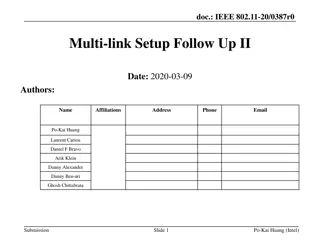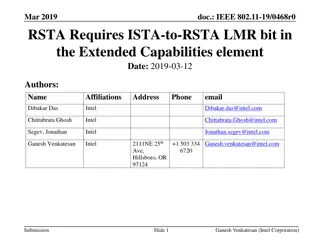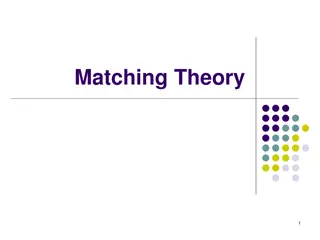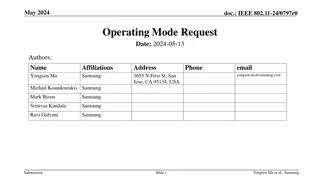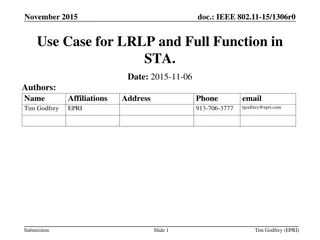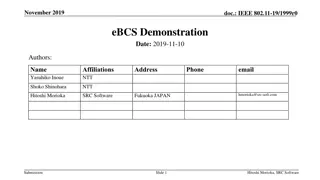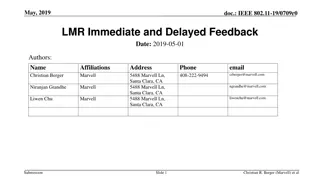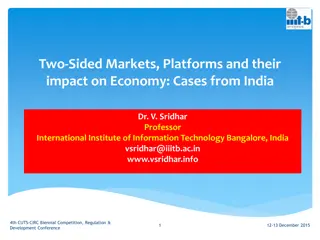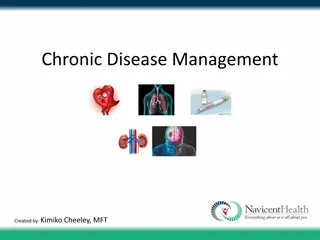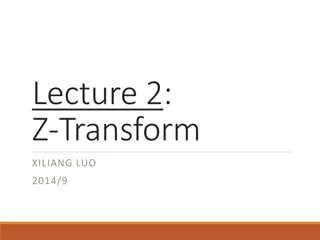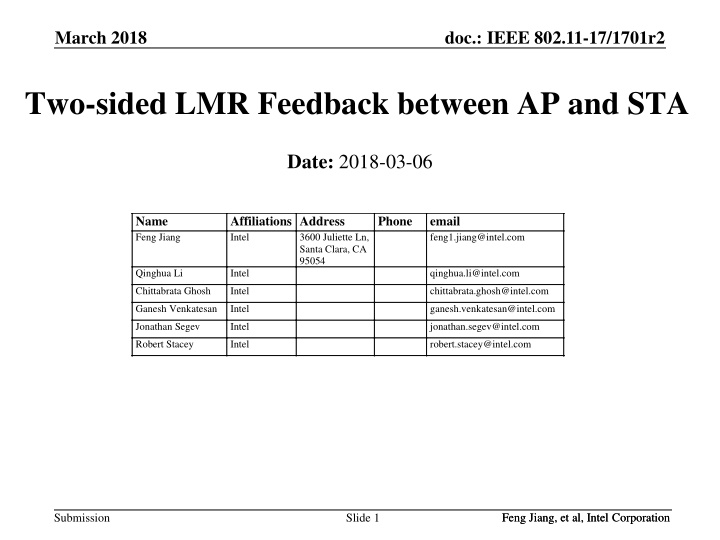
Two-Sided LMR Feedback Design for IEEE 802.11-17/1701r2
Explore the detailed design proposal for two-sided Location Measurement Report (LMR) feedback in IEEE 802.11-17/1701r2. The submission presents considerations for privacy, design, and negotiation aspects to enable enhanced feedback between Station (STA) and Access Point (AP). Privacy options for STA-AP location reporting, resource allocation considerations, and design implications are discussed.
Download Presentation

Please find below an Image/Link to download the presentation.
The content on the website is provided AS IS for your information and personal use only. It may not be sold, licensed, or shared on other websites without obtaining consent from the author. If you encounter any issues during the download, it is possible that the publisher has removed the file from their server.
You are allowed to download the files provided on this website for personal or commercial use, subject to the condition that they are used lawfully. All files are the property of their respective owners.
The content on the website is provided AS IS for your information and personal use only. It may not be sold, licensed, or shared on other websites without obtaining consent from the author.
E N D
Presentation Transcript
March 2018 doc.: IEEE 802.11-17/1701r2 Two-sided LMR Feedback between AP and STA Date: 2018-03-06 Name Feng Jiang Affiliations Address Intel Phone email feng1.jiang@intel.com 3600 Juliette Ln, Santa Clara, CA 95054 Qinghua Li Intel qinghua.li@intel.com Chittabrata Ghosh Intel chittabrata.ghosh@intel.com Ganesh Venkatesan Intel ganesh.venkatesan@intel.com Jonathan Segev Intel jonathan.segev@intel.com Robert Stacey Intel robert.stacey@intel.com Feng Jiang, et al, Intel Corporation Feng Jiang, et al, Intel Corporation Submission Slide 1
March 2018 doc.: IEEE 802.11-17/1701r2 Introduction For privacy reasons STA to AP location reporting feedback is optional and on consensual basis (REVmc FTM). The current design of 11az focuses on the single-side LMR feedback (ISTA2RSTA), and to enable two-sided LMR feedback, new feature need to be developed. In this submission, we propose detailed design for two-sided LMR feedback regarding negotiation indication, measurement resource allocation and LMR exchange sequence. Feng Jiang, et al, Intel Corporation Feng Jiang, et al, Intel Corporation Submission 2
March 2018 doc.: IEEE 802.11-17/1701r2 Consideration for Two-sided LMR (1) Privacy considerations: For privacy reasons STA to AP location feedback is optional (REVmc FTM). STA can choose whether or not report its LMR to AP. AP behavior based on STA s response is implementation/usage dependent and out of scope of std. (e.g. asset tracking, within trusted network). Feng Jiang, et al, Intel Corporation Feng Jiang, et al, Intel Corporation Submission 3
March 2018 doc.: IEEE 802.11-17/1701r2 Consideration for Two-sided LMR (2) Design consideration: Different STAs have different computation resources, hence TOA calculation delay is different. UL allocation needs to be aligned to results availability at STA side. STA is most cases power conscious, additional report should have minimal additional PWR implication. Minimize number of sequences for development simplicity preferably one sequence with minimal number of changes from the mainstream sequence: o Shorter standard development o Simpler development o Easier test plan development and testing Results for client side used for user experience, and results for AP side less so (latency is not as important). However the STAs LMR computation capability varies, which makes STAs LMR ready time different and a resource allocation method need to be designed to enable AP to solicit LMR from multiple STAs efficiently. Feng Jiang, et al, Intel Corporation Feng Jiang, et al, Intel Corporation Submission 4
March 2018 doc.: IEEE 802.11-17/1701r2 Consideration for Two-sided LMR (3) SU vs. MU design considerations: Preferably similar ISTA time constraints exist between SU and MU operation modes. ISTA is responsible for medium reservation using NDPA. RSTA is responsible for medium reservation using TF. Feng Jiang, et al, Intel Corporation Feng Jiang, et al, Intel Corporation Submission 5
March 2018 doc.: IEEE 802.11-17/1701r2 Negotiation for Two-sided LMR Feedback A new parameter field in the NGP parameter element can be defined to indicate the ISTA2RSTA LMR feedback In the IFTMR frame, the ISTA can use this bit to indicate whether it s willing to report its LMR information to RSTA. The ISTA can also indicate its LMR feedback type in NGP parameter element: o Immediate (LMR in the same TxOP or availability window as measurement) o Delayed (LMR for the measurement in previous TxOP or availability window ) In the IFTM frame, this new field can be used by RSTA to notify ISTA whether the RSTA will request the ISTA s LMR report. Feng Jiang, et al, Intel Corporation Feng Jiang, et al, Intel Corporation Submission 6
March 2018 doc.: IEEE 802.11-17/1701r2 Rule for ISTA s Resource Request Design for simplicity: If a two-sided LMR is agreed on, ISTA may perform respond to poll asking for a new measurement round N only if measurement ToA/ToD for measurement round N-1 are available. For two-sided LMR, RSTA allocates UL resource in the same availability window for ISTA2RSTA LMR (power efficiency). ISTA2RSTA LMR type: STA1 and STA3 (immediate ), STA2 (delayed) Feng Jiang, et al, Intel Corporation Feng Jiang, et al, Intel Corporation Submission 7
March 2018 doc.: IEEE 802.11-17/1701r2 Two-sided LMR Exchange Sequence (1) Use a single sequence to support both of RSTA2ISTA and ISTA2RSTA LMR RSTA and ISTA can support either immediate or delay LMR feedback. For immediate LMR, the LMR include ToA/ToD or CSI report of round N measurement For delayed LMR, the LMR include ToA/ToD information of round N-1 measurement Feng Jiang, et al, Intel Corporation Feng Jiang, et al, Intel Corporation Submission 8
March 2018 doc.: IEEE 802.11-17/1701r2 Two-sided LMR Exchange Sequence (2) The RSTA (AP) uses MU PPDU to transmit the RSTA2ISTA (AP-to-STA) LMR feedback to ISTA A trigger frame (TF) for LMR is used to solicit the ISTA2RSTA (STA-to-AP) LMR and this trigger frame allocates resource for ISTA2RSTA LMR frame. After receiving the TF for LMR, the ISTA responses with HE TB PPDU which includes ISTA2RSTA LMR frame. RSTA and ISTA can support either immediate or delay LMR feedback. The LMR feedback type information can help RSTA to schedule resource. For example, for the ISTA with delayed LMR, the RSTA may not poll the ISTA in every availability window, because the ISTA s ISTA2RSTA LMR for measurement in last availability window may not be ready. Feng Jiang, et al, Intel Corporation Feng Jiang, et al, Intel Corporation Submission 9
March 2018 doc.: IEEE 802.11-17/1701r2 Conclusion In negotiation phase, an indication parameter field is defined to enable the RSTA and ISTA to negotiate the ISTA2RSTA LMR feedback. For the two-sided LMR feedback, a resource request rule for ISTA is proposed to simplify the RSTA s resource allocation for ISTA2RSTA LMR transmission. Efficient LMR exchange sequence is designed to enable two-sided LMR feedback between ISTA and RSTA. Feng Jiang, et al, Intel Corporation Feng Jiang, et al, Intel Corporation Submission 10
March 2018 doc.: IEEE 802.11-17/1701r2 Straw Poll #1 Do you support the following SU ranging sequence for RSTA2ISTA and ISTA2RSTA LMR feedback? Y: N: Abstain: Please note: the LMR could be either immediate (for round N) or delayed (for round N-1) and the error recovery rule is TBD. Feng Jiang, et al, Intel Corporation Feng Jiang, et al, Intel Corporation Submission 11
March 2018 doc.: IEEE 802.11-17/1701r2 Motion #1 We agree for the following SU ranging sequence when both RSTA2ISTA and ISTA2RSTA LMR feedback were previously negotiated: Please note: the LMR could be either immediate (for round N) or delayed (for round N-1) and the error recovery rule is TBD. Y: N: Abstain: Feng Jiang, et al, Intel Corporation Feng Jiang, et al, Intel Corporation Submission 12
March 2018 doc.: IEEE 802.11-17/1701r2 Straw Poll #2 Do you agree to add a new field in the NGP parameter IE within the IFTM and IFTMR frames to indicate the request and consent to use ISTA2RSTA LMR feedback? In the IFTMR frame, the ISTA uses this field to indicate whether it s willing to report its LMR information to RSTA. In the IFTM frame, this field is used by RSTA to notify ISTA whether the RSTA will request the ISTA s LMR report. Y: N: Abstain: Feng Jiang, et al, Intel Corporation Feng Jiang, et al, Intel Corporation Submission 13
March 2018 doc.: IEEE 802.11-17/1701r2 Motion #2 We agree to add a new field in the NGP parameter IE within the IFTM and IFTMR frames to indicate the request and consent to use ISTA2RSTA LMR feedback In the IFTMR frame, the ISTA uses this field to indicate whether it s willing to report its LMR information to RSTA. In the IFTM frame, this field is used by RSTA to notify ISTA whether the RSTA will request the ISTA s LMR report. Y: N: Abstain: Feng Jiang, et al, Intel Corporation Feng Jiang, et al, Intel Corporation Submission 14
March 2018 doc.: IEEE 802.11-17/1701r2 Straw Poll #3 Do you agree to define an LMR feedback type (immediate or delayed) parameter field in NGP parameters subelemet of IFTMR frame for VHTz and HEz ranging sequence: This parameter field is used by ISTA to indicate the ISTA2RSTA LMR feedback type during FTM negotiation. Immediate feedback type ISTA2RSTA LMR delivers measurement performed at the same TxOP or availability window. Delayed feedback type ISTA2RSTA LMR delivers measurement performed at the previous TxOP or availability window. Y: N: Abstain: Feng Jiang, et al, Intel Corporation Feng Jiang, et al, Intel Corporation Submission 15
March 2018 doc.: IEEE 802.11-17/1701r2 Motion #3 We agree to define an LMR feedback type (immediate or delayed) parameter field in NGP parameters subelemet of IFTMR frame for VHTz and HEz ranging sequence: This parameter field is used by ISTA to indicate the ISTA2RSTA LMR feedback type during FTM negotiation. Immediate feedback type ISTA2RSTA LMR delivers measurement performed at the same TxOP or availability window. Delayed feedback type ISTA2RSTA LMR delivers measurement performed at the previous TxOP or availability window. Y: N: Abstain: Feng Jiang, et al, Intel Corporation Feng Jiang, et al, Intel Corporation Submission 16
March 2018 doc.: IEEE 802.11-17/1701r2 Straw Poll #4 Do you agree that once consent is set and ISTA2RSTA LMR reporting was agreed on, during the HEz sequence the ISTA will only respond to a poll once the delayed ISTA2RSTA LMR results are available at ISTA? Y: N: A: Feng Jiang, et al, Intel Corporation Feng Jiang, et al, Intel Corporation Submission 17
March 2018 doc.: IEEE 802.11-17/1701r2 Motion #4 We agree that once consent is set and ISTA2RSTA LMR reporting was agreed on, during the HEz sequence the ISTA will only respond to a poll once the delayed ISTA2RSTA LMR results are available at ISTA? Y: N: A: Feng Jiang, et al, Intel Corporation Feng Jiang, et al, Intel Corporation Submission 18

